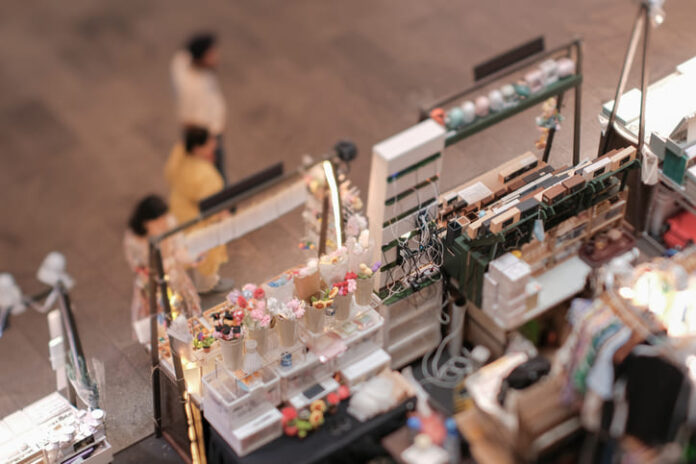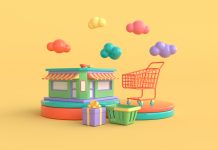Since COVID-19 forced us into lockdowns and varying levels of restrictions, we have seen countless retailers, hospitality outlets and other businesses collapse due to the seismic shift in how we spend both money and time. It isn’t just down to COVID-19 though. The digital world has transformed the landscape so much that things we would typically venture out for are now purchased at the click of a button, and often delivered the same day. The activities we may partake in at a friend’s house are now enjoyed remotely with our interaction coming via screen rather than face to face.
For some of us, it has become the norm, for others, there is the desire to return to the authenticity of days gone by. There is a growing emergence among many businesses to claw back this more personal touch and it stems from more innovative ways of marketing.
The competition has become fiercer, the prices more competitive, and as a result, the creativity more spectacular.
So, what can we do, and what is going on out there, on high streets up and down the country? We took a look.
How bad is the high street looking?
Data showed that in 2023, over 14,000 shops and outlets belonging to multiples or chains vanished from UK high streets, shopping centres and retail parks. This staggering figure equates to 39 businesses closing their doors for the last time, per day.
Openings actually picked up, which may have given some people a more positive outlook on the retail landscape but unfortunately, these openings were eclipsed by the number of closures.
As mentioned in our intro, the digital world has played a large part. Online retail has grown faster in the UK than in any other country. Data from the Centre for Retail Research shows that by 2019, online retailing accounted for 19.2% of all retail and in the first quarter of 2021, this had jumped to more than 36% every month. This was of course largely down to Covid-19, and by 2023, it has settled at 25%.
That is still a substantial number though. A quarter of retail sales coming from online sources is hugely detrimental to physical stores, whether they be national chains or independents.
So, how do things change, and how are businesses reacting? Price cuts? Smaller stores? Cheaper inventory? All could be considered, but instead, many are embracing better and more immersive marketing techniques.
What are retailers doing to save their business?
Many have in fact accepted that a physical store may be pushing the limits of their budgets a little too much. Rising rents and costly utilities are helping businesses decide that online is the only way they stay active. However, a visual presence can help a customer or client feel more in touch with the brand, and that is why immersive and creative marketing is being embraced. Businesses are turning to experiential agencies, to craft unique, emotive, fun and reactionary experiences, which draw attention and custom to the brand.
How are they doing it though? In a sense, they are going back to basics, by reviving the pop-up shop. The versatile, go-anywhere store that can move to where the customers are rather than sitting stoically awaiting a passer-by.
What may have once been seen as the avenue chosen by smaller businesses, the pop-up is now being embraced by large chains as they strive to maintain their status among huge levels of competition. And, with minimal overheads but potentially a more impactful presence, the use of a pop-up proves to be even more alluring as costs are kept down.
So why is the pop-up working and what role does an experiential agency London based or beyond have to play? Let’s have a closer look.
The role of experiential marketing in the pop-up store revival
Whilst pop-up stores have been in existence for some considerable time, how they now connect with their audiences has changed. Rather than set up shop in a temporary space in a shopping centre or combine with other businesses to rent out a former store, pop-ups are constantly moving to showcase their wares to audiences where they know demand is likely.
These days, with smartphones in hand, everything is shareable, likeable and able to be engageable on multiple levels. This has brought people closer to brands, celebrities, products and more.
So now, rather than standing at the store waiting for people to make a purchase, pop-up store owners are encouraging people to be part of the brand. With QR codes that take you to exclusive product-related content, gamification that brings you closer to the brand and experiences that remain memorable, pop-ups are leaving an impression wherever they go without vast sums being spent to achieve it.
Think of it like this, a brand sets up a pop-up store in a popular UK city, and the product being sold has a celebrity endorsement. Perhaps endorsed by an influencer if it suits the target demographic. The pop-up store highlights the connection between brand and influencer through its interactive displays, the product itself and, here’s the kicker, the chance for a purchasing customer to meet and greet the associated influencer. All the pop-up store wants you to do is make a purchase, snap a pic in front of the pop-up store and use their brand or event hashtag. The interaction from the customer can be sufficient to drive interest, especially when the brand starts sharing the images posted by the customer.
Suddenly, when the business heads to its next town, the effect of its goals starts to increase and eventually, all being well, there is a campaign that has got people feeling included but also in with a chance of winning. Of course, there would need to be marketing efforts behind the scenes to help generate awareness so it can’t be taken as a given that a pop-up shop is your only pathway to success. So fun social campaigns, targeted emails and more would be imperative.
In many cases, there isn’t even the need for an influencer or celebrity. It is simply about being in the right place with the right product at the right time. Does your product serve summer or winter better? Is the target young kids, uni students or retired people? Get those basics right and you are ready!
The importance of the experience
It would be simple to fill a table or stand with products and literature but where is the hook? Where is the element of intrigue, excitement and engagement?
A pop-up shop aiming to be successful wants to make a passer-by stop in their tracks or a shopper remember who you are. This is done through creating the experience. Now, you can take the example of using an influencer or celebrity or you can leave it. It will all depend on how you want to connect with your audience, but with or without such a famous face, you’ll want to create something that lingers in the memory of the consumer and makes them always say “Wow!”
Look at what you want to achieve with the experience. Is it sales or just brand awareness? What would you need to be able to achieve either of these? What and how do you want those visiting to feel and remember? Do you want them to share their experiences, review your brand or keep it a secret?
Once you know, you can speak with an experienced experiential marketing agency. They will take the answers to those simple questions and mould something memorable.
Experiential marketing examples for your pop-up shop
Experiential marketing is all about the experience. It is all about making sure people leave having enjoyed their interaction. How that can be achieved will depend on the target age group, product type and more. We’ve picked a small selection of experiential marketing ideas you could look to embrace within your pop-up.
Product Demos
Let’s say you are a beauty brand in this example. Why not allow customers to try out the product range with guidance from beauty experts? Giving valuable advice, this free consultation or makeover allows the consumer to learn more about the range but also experience the product in a hands-on way that could see them leave feeling great about not only themselves but the brand too.
Immersive brand environment
Let’s take fashion as an example here. You are a fashion brand trying to target a certain customer base for a certain time of year. Summer beachwear? Theme the pop-up as a beach including sand, beach hut, music and maybe even a cocktail or two. You’ll not only create a fun and relaxed environment but allow customers a peek into the brand identity. Maybe you could even make beach hut changing rooms!
Launch events
We all love a product launch, especially when it’s in a space that excites us. Let’s use tech in this example. Setting up multiple pop-ups in key locations, all to launch on the same day at the same time. These will showcase the latest tech being released by your company with attendees getting to demo it before it lands on the shelves and websites. Hand out limited-edition free merch and suddenly, the sharing on socials and word of mouth will do lots of your marketing for you!
Workshops and classes
Perhaps your brand specialises in homeware. A workshop showing DIY hacks, cooking solutions or interior design ideas could be ideal. Customers can try and sample for themselves and remember you as the brand that helped them find an answer to their problem or made their lives easier at home.
Social media integration
We touched upon this earlier and sharing, commenting and liking on social media is something many of us do. Build your pop-up with this in mind, incorporating photo ops, interactive elements and visually attractive layouts. Encourage the use of a brand hashtag and even label up areas as “FYP area” or similar. You’ll be surprised how many people flock to it, snap a pic and then share it!



































